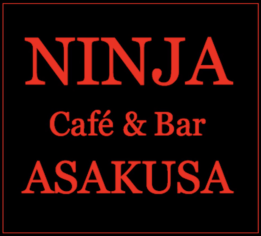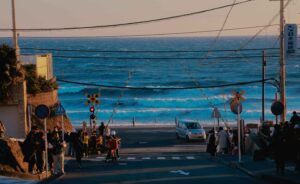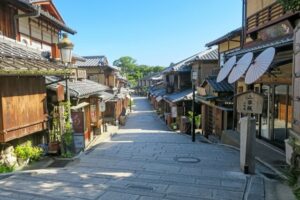Top 10 Scenic Spots in Kyoto for Kyoto Fanatics
Kyoto – an ancient capital of Japan with over a thousand years of history, where the beauty of each season is woven into the cityscape.
The city exudes an atmosphere as if time has stood still; from mystical shrines lined with vermilion torii gates, to serene Zen rock gardens and dreamy bamboo forests.
In this guide, we introduce 10 carefully selected scenic spots you absolutely shouldn't miss on your visit to Kyoto.
- Cultural Views: 2 Unmissable Historical Spots
- Temple & Shrine Views That Feel Like Living Scroll Paintings: 5 Must-See Spots
- Soothe Your Soul with Natural Beauty: 3 Scenic Landscapes in Kyoto
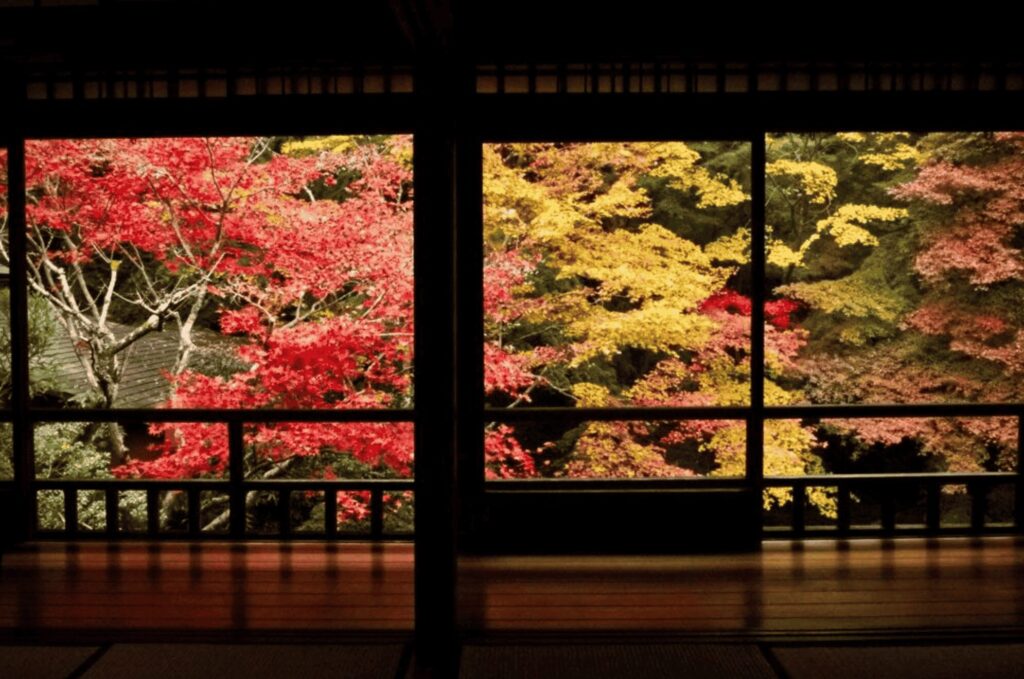
① Cultural Views: 2 Unmissable Historical Spots
1. Gion – The Quintessential Old Kyoto
If you want to immerse yourself in Kyoto's traditional townscape, Gion is the perfect place.
The cobblestone streets lined with historic townhouses, glimpses of geisha and maiko strolling by, and the warm glow of lanterns at dusk ― all create a scene worthy of a painting.
Don’t miss the Ninja Experience Cafe in Gion either!
You can try throwing shuriken and blowing darts, explore ninja trick rooms, and even stroll the streets dressed as a ninja for a fun cultural adventure.
Recommended time to visit:
Evening to night (5:00 PM – 9:00 PM)
The streets are beautifully lit, creating a magical atmosphere.
Ninja Experience Cafe Kyoto Gion Official Website
2. Gozan no Okuribi (Daimonji Fire Festival)
Daimonji Fire Festival is held annually on August 16.
This traditional event lights five mountains around Kyoto with massive bonfires shaped like kanji characters and symbols.
It marks the return of ancestral spirits to the afterlife.
Watching the flames from the banks of the Kamo River is a moving and unforgettable experience.
Gozan no Okuribi Official Website
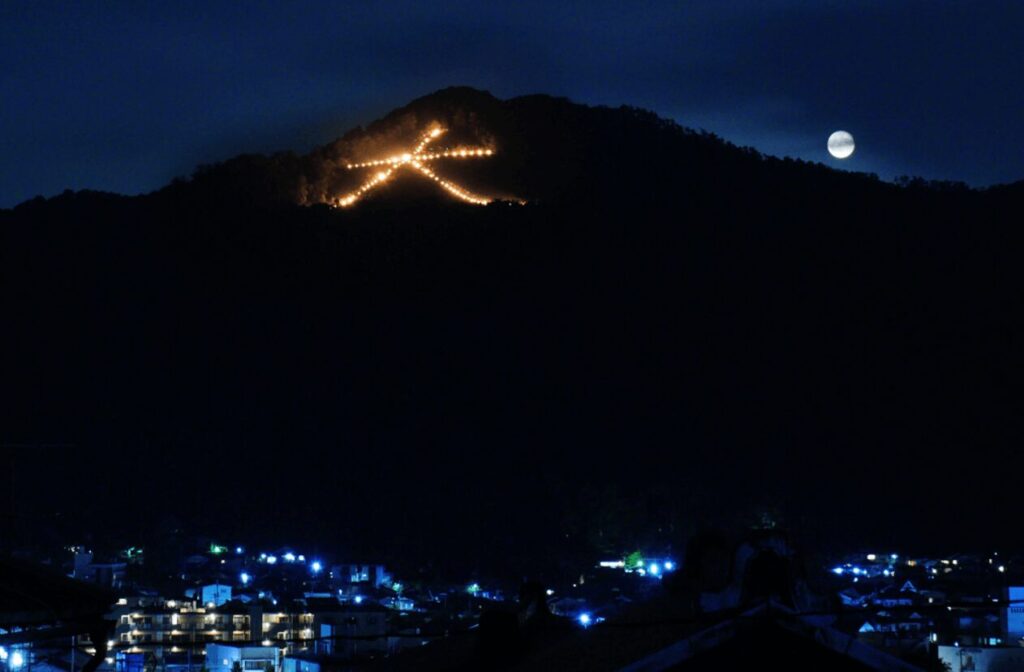
②Temple & Shrine Views That Feel Like Living Scroll Paintings: 5 Must-See Spots
3. Kiyomizu-dera – Panoramic Views from a Floating Stage
One of Kyoto's most iconic landmarks, Kiyomizu-dera stands tall in the Higashiyama hills.
Its wooden stage appears to float above the forest.
From this stage, you'll get sweeping views that change with the seasons ― cherry blossoms in spring, lush greens in summer, fiery maple leaves in autumn, and snow in winter.
At dusk, the city below glows orange, creating an otherworldly scene.
Best times to visit:
Morning (8:00 AM – 10:00 AM): Fewer crowds, peaceful views.
Night (7:00 PM – 9:00 PM): During seasonal illumination events, the temple glows under blue lighting.
Kiyomizu-dera Official Website
Have a look at this article too! Kiyomizudera Temple: Kyoto's best tourist spot for sceneries
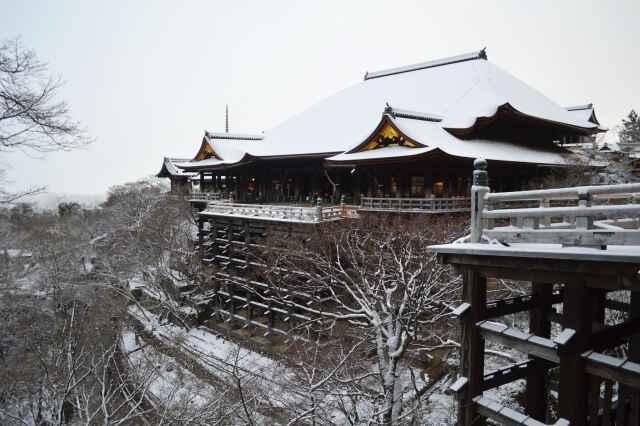
4. Kinkaku-ji (Golden Pavilion) – Shimmering Gold Reflections
This UNESCO World Heritage Site is renowned for its gold-leaf-covered pavilion, which glimmers beautifully across a reflective pond.
Especially stunning during winter, when the snow adds a serene contrast to the golden structure.
Best time to visit:
Morning (9:00 AM – 11:00 AM)
The morning sun enhances the reflection in the pond.
It gets crowded later in the day.
Kinkaku-ji Official Website
Here is an article on Kinkakuji Temple, Kyoto's golden treasure
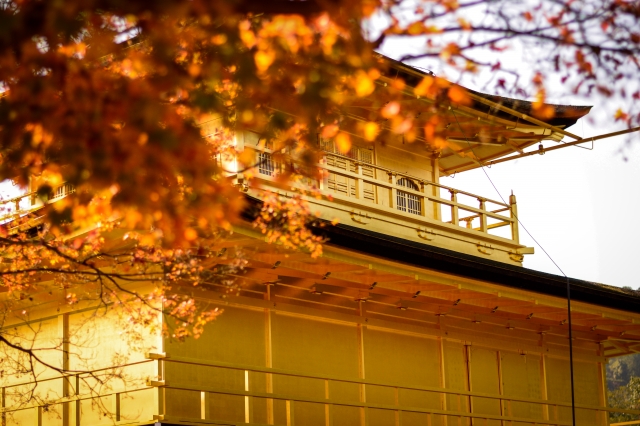
5. Ryoan-ji Rock Garden – Zen Stillness in Stone
The rock garden at Ryoan-ji is a karesansui (dry landscape) garden with a simple yet profoundly beautiful design.
Karesansui is a traditional Japanese garden style that represents the flow of water using stones, sand, plants, and terrain instead of actual water.
Fifteen stones are arranged in the garden, but it is said that no matter where you stand, you can never see all of them at once.
Sitting in silence and gazing at the rock garden offers a moment of deep contemplation, much like Zen training.
It is a recommended spot for those who wish to forget the busyness of daily life and calm their mind.
Ryoan-ji Official Website
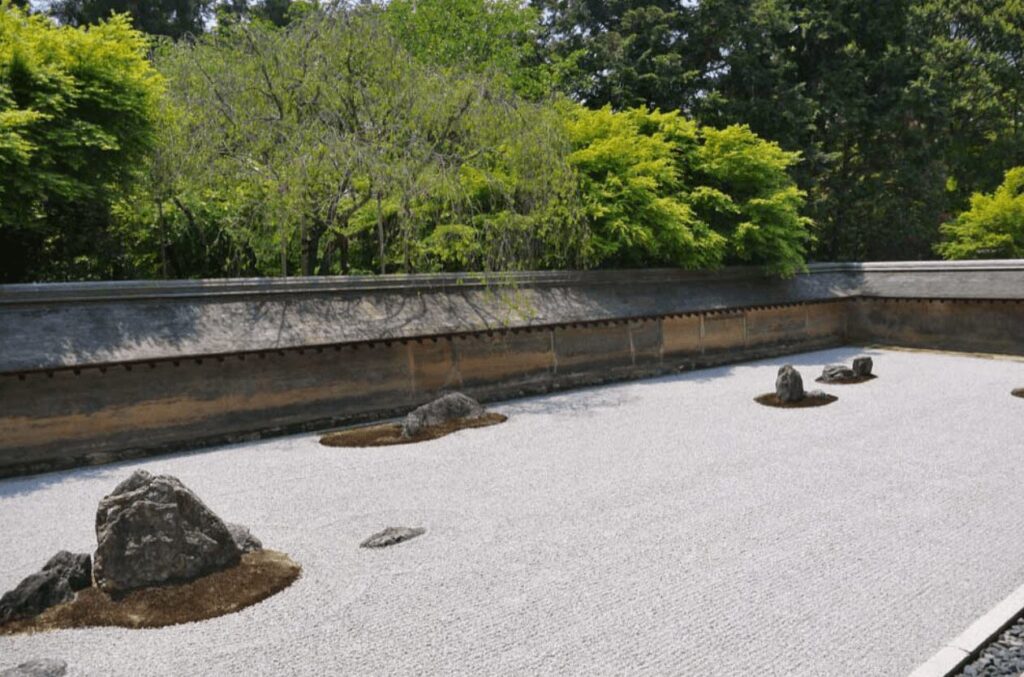
6. Fushimi Inari Shrine – A Tunnel of Endless Torii Gates
One of Kyoto’s most iconic sights. Dedicated to the god of prosperity and agriculture, the shrine is famous for its thousands of vermilion torii gates forming mystical pathways.Walking through them feels like stepping into another world.
Best times to visit:
Early morning (6:00 AM – 9:00 AM): Quiet and great for photos.
Late afternoon (4:00 PM – 6:00 PM): The evening light enhances the red gates beautifully.
Climb to the summit of Mt. Inari for sweeping city views.
Fushimi Inari Shrine Official Website
Have a look at this article Fushimi Inari Taisha Shrine - Kyoto shrine with 1,000 torii gates
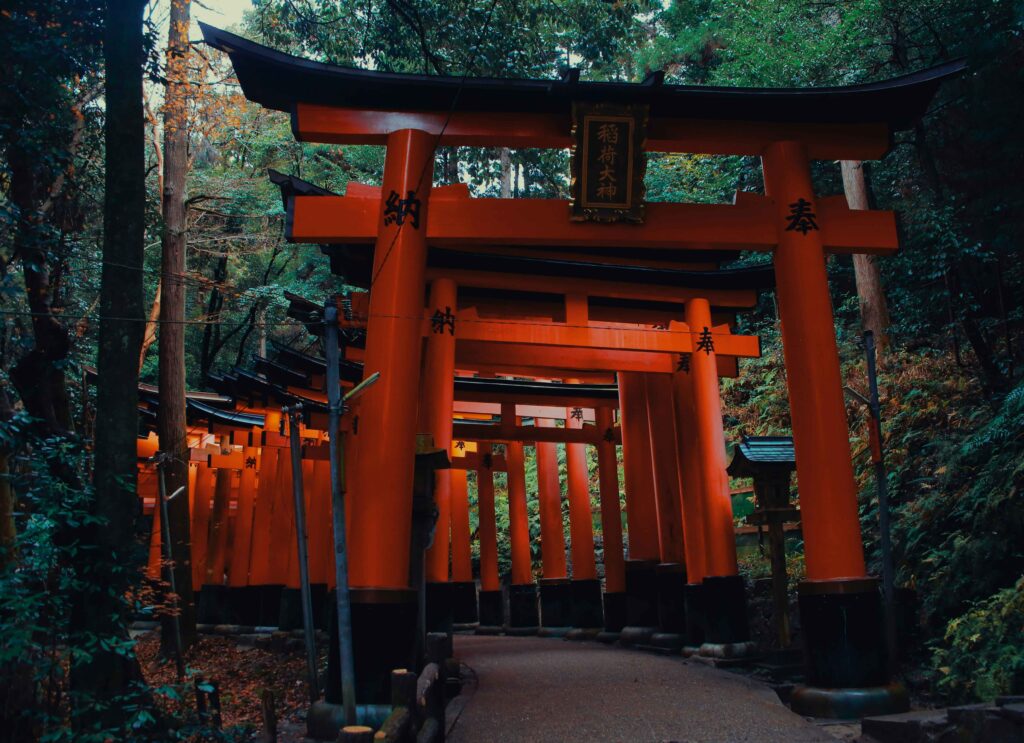
7. Ruriko-in – A Hidden Gem of Color and Calm
Ruriko-in is a Jōdo Shinshū temple nestled at the foot of Mount Hiei, surrounded by beautiful nature.
It is a hidden gem that can only be entered during special opening periods in spring, summer, and autumn.
In particular, during the autumn foliage season, red and yellow leaves are reflected on the tatami, creating a scene of beauty like a painting.
Sitting quietly and taking in this dreamlike view is truly the height of luxury.
Check the dates of the special openings and be sure to pay a visit.
Ruriko-in Temple Official Website

③ Soothe Your Soul with Natural Beauty: 3 Scenic Landscapes in Kyoto
8. Arashiyama – Bamboo Grove, Kimono Forest, and the Togetsukyo Bridge
Amanohashidate is one of Japan’s “Three Scenic Views.”
This sandbar stretches across the sea, covered with about 6,700 pine trees, a shape formed over thousands of years.
There are three main viewpoints.
At Kasamatsu Park, looking at it upside down through your legs makes it appear like a bridge to heaven or a dragon soaring into the sky.
It's worth the short trip from central Kyoto to see this extraordinary view.
Arashiyama Website
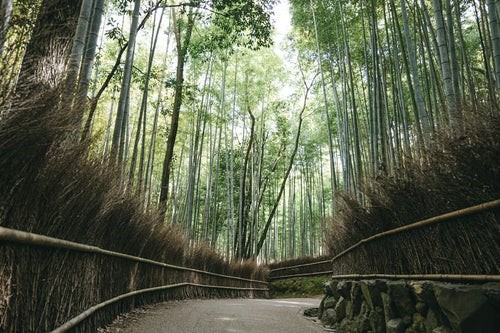
9. Amanohashidate – A Heavenly Bridge in the Sky
Amanohashidate is one of Japan’s “Three Scenic Views.”
This sandbar stretches across the sea, covered with about 6,700 pine trees, a shape formed over thousands of years.
There are three main viewpoints.
At Kasamatsu Park, looking at it upside down through your legs makes it appear like a bridge to heaven or a dragon soaring into the sky.
It's worth the short trip from central Kyoto to see this extraordinary view.
Amanohashidate Official Website
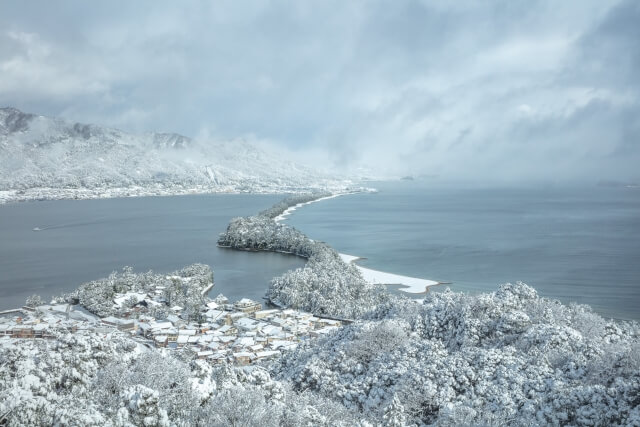
10. Funaya of Ine – Traditional Houses Floating on the Sea
In the northern part of Kyoto Prefecture lies Ine, a fishing village where houses appear to float on the water.
These traditional funaya feature boat storage on the first floor and living space on the second.
The sight of wooden homes lining the blue sea shows a completely different side of Kyoto.
Photography without permission is prohibited, so we recommend taking a sightseeing boat to view the scenery from the water.
Best time to visit: Late afternoon to sunset (4:00 PM – 6:00 PM), when the silhouettes of the houses reflect beautifully on the sea.
Ine Tourist Information Website
What are we?
We run Ninja Experience Cafe in Tokyo, Kyoto and Osaka, Japan.
Here you can immerse yourself in Japanese culture through experiencing ninja training.
Both adults and children are welcome to try their hand at defeating the ninja master inside the cafe.
The cafe is an indoor interactive zone, so it can be enjoyed even on rainy days.
If you are thinking "I want to be a real ninja too!” or interested in becoming a real ninja, please visit us.
Reservations can be made here.
Unauthorized copying and replication of the contents of this site, text and images are strictly prohibited.
